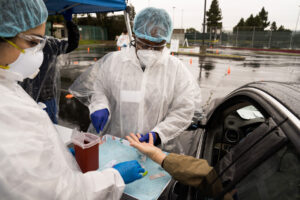The growing awareness of the potential for asymptomatic cases to spread Covid-19 hit the news yesterday together with a widely misinterpreted paper on the survival of the virus in aerosols. What does it all mean?
Concern about asymptomatic carriers has been growing since data from the Diamond Princess cruise ship showed that about half of all infections were asymptomatic. Then, two papers yesterday demonstrated that an asymptomatic carrier can spread the disease and that levels of the virus in their mouth, nose, and throat can be as high as that found in symptomatic patients. So, people without symptoms can spread the disease. But how?
A third paper published yesterday has been misinterpreted to suggest that this is an airborne infection. The paper evaluated the viability of the virus on various surfaces and in aerosols. Viruses survived in the droplets deposited on a surface for between 24 (on cardboard) and 72 (on steel or plastic) hours and remained viable in an aerosol for up to three hours. The researchers used special equipment to keep those aerosols in the air. Think of them as something like the mist from a can of hairspray. They might linger in the air for a minute or two, but not three hours. And aerosols are not generated simply by breathing. It takes a cough or a sneeze (i.e., a symptom). Neeltje van Doremalen, an author of the study made this clear, Tweeting, “This is not evidence of aerosol transmission.”
In fact, we can see from the data that the corona virus cannot be spread in the air simply by breathing if we compare it to a virus we know is airborne, measles. We know that influenza is spread by droplets. Influenza has a reproduction number (R0) of between 0.9 and 2.8, depending on the strain. (R0 is the average number of people infected by each new case.) Covid-19 appears to have an R0 of about 2.3. True airborne spread is explosive. Measles has an R0 of 12-18!
Bottom Line: Asymptomatic cases can spread the disease, which is why all of the steps we have taken to prevent its spread (social distance, handwashing, etc.) are so important. However, the disease is not airborne. It spreads through droplets and recently released aerosols. So stay home if you have a cough and avoid people who are coughing.

